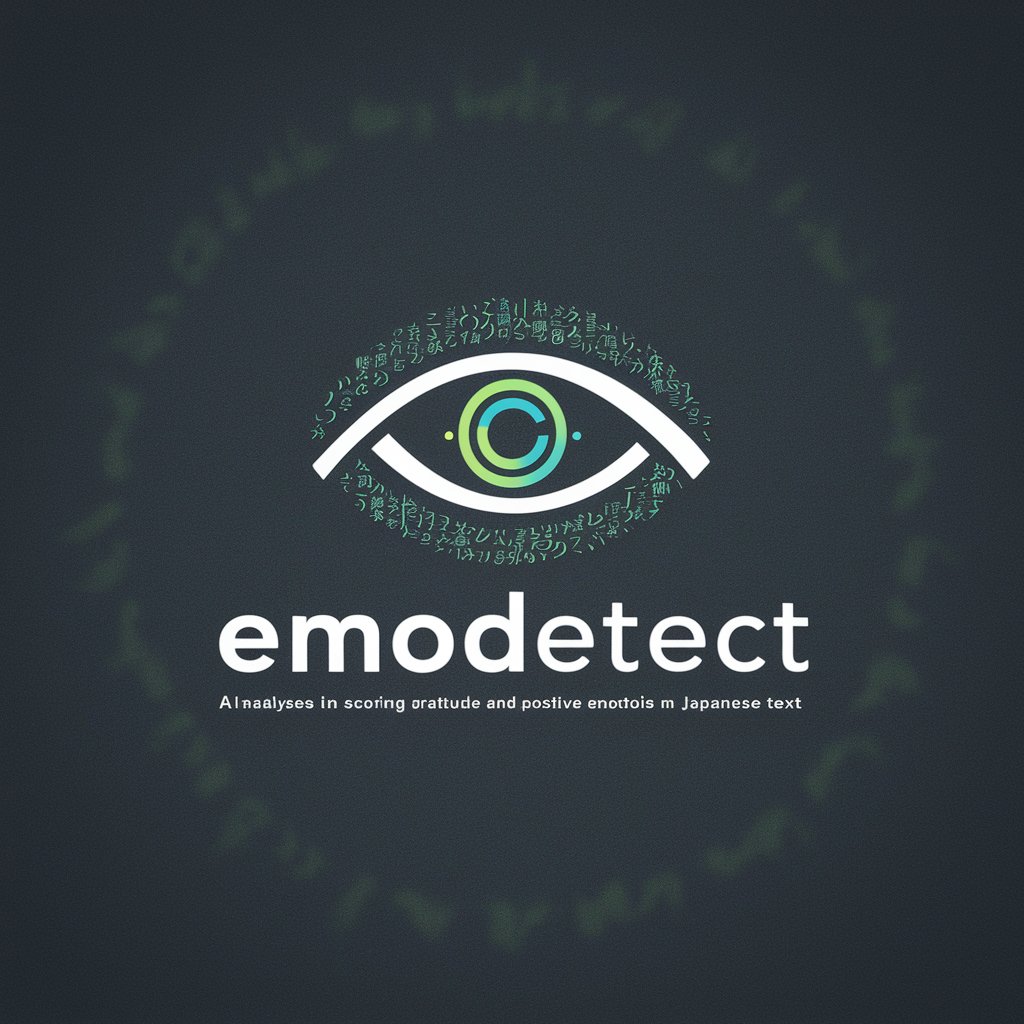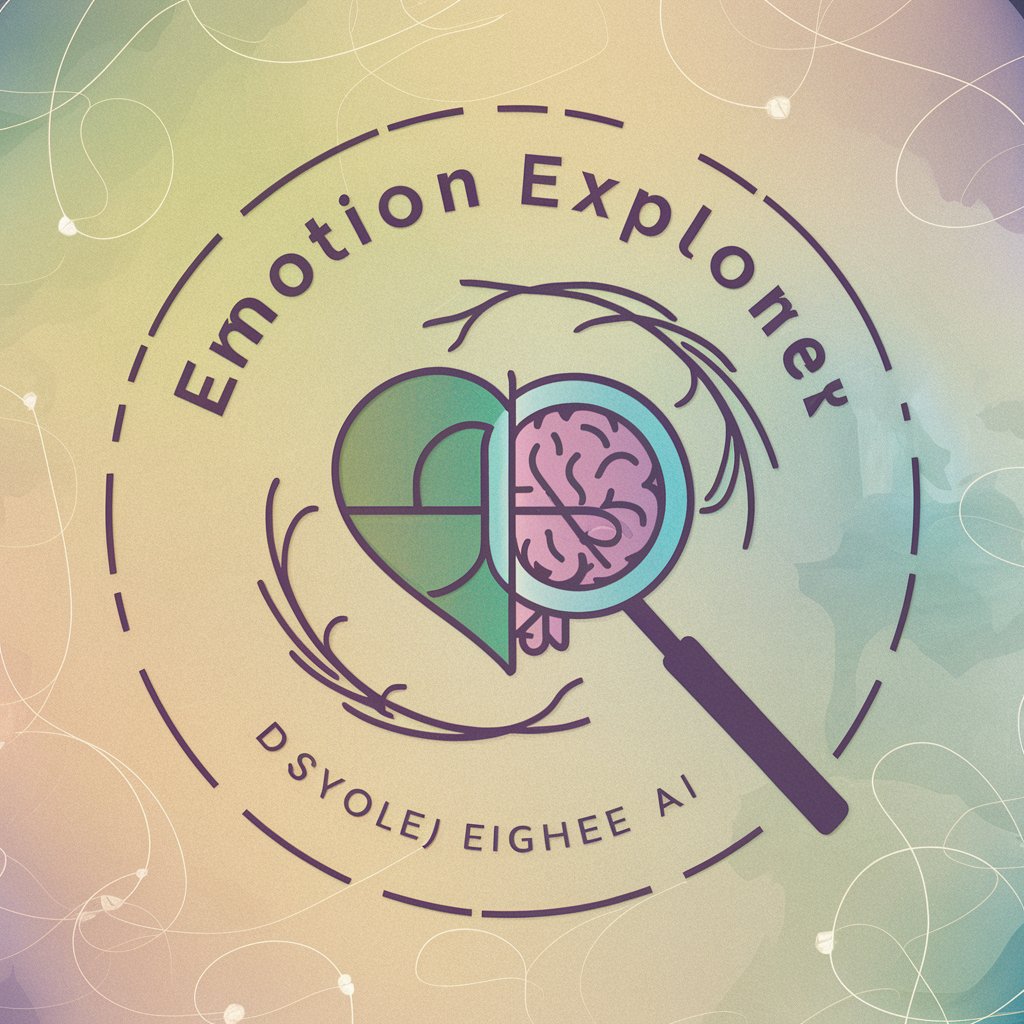
EmoDetect - Japanese Gratitude Analysis

Welcome! Let's explore the emotions in your Japanese text.
Deciphering Gratitude with AI Precision
Analyze the emotional content in this Japanese text:
Provide a gratitude score for the following Japanese passage:
Evaluate the positive sentiment in this Japanese message:
Determine the level of gratitude expressed in this Japanese text:
Get Embed Code
Overview of EmoDetect
EmoDetect is a specialized tool designed for the nuanced analysis of emotional content in Japanese text. It integrates advanced natural language processing techniques to assess various emotional metrics with a focus on the expression of gratitude. EmoDetect quantifies the frequency of gratitude and positive words, identifies direct gratitude objects, analyzes gratitude towards attitudes or actions, and evaluates gratitude intensity. The tool is capable of providing a comprehensive 'overall_gratitude_score' based on the contextual analysis of the text, offering precise, decimal-level measurements across a scale of 0 to 5. It's tailored for scenarios where understanding the depth and nuances of gratitude or positive sentiment is crucial, such as customer feedback analysis or interpersonal communication studies. Powered by ChatGPT-4o。

Core Functions of EmoDetect
Frequency of Gratitude Words
Example
Identifying and quantifying the number of words that express gratitude in customer reviews.
Scenario
Businesses analyze customer feedback to gauge satisfaction and improve services.
Frequency of Positive Words
Example
Measuring the prevalence of positive language in social media posts.
Scenario
Marketing teams evaluate brand sentiment and engagement on social media platforms.
Direct Gratitude Objects
Example
Detecting specific entities or individuals to whom gratitude is expressed in thank-you letters.
Scenario
Organizations understand the direct impact of their staff or services on clients or partners.
Gratitude towards Attitudes or Actions
Example
Assessing whether gratitude is directed towards general behavior, specific actions, or attitudes in employee feedback.
Scenario
HR departments gauge employee satisfaction and recognition towards management or peer actions.
Gratitude Intensity
Example
Evaluating the intensity or depth of gratitude expressed in customer testimonials.
Scenario
Businesses assess the impact of their products or services on customers' lives.
Overall Gratitude Score
Example
Providing a comprehensive, context-based assessment of gratitude expressed in therapy session transcripts.
Scenario
Therapists and psychologists measure the progress or state of gratitude in patients over time.
Ideal User Groups for EmoDetect
Businesses and Marketers
Companies can use EmoDetect to analyze customer feedback, reviews, and social media interactions to understand client satisfaction, improve product offerings, and tailor marketing strategies based on the emotional content of customer communications.
Human Resources Professionals
HR departments can employ EmoDetect to gauge employee morale and satisfaction, understand the impact of management practices, and foster a positive work environment by analyzing feedback, surveys, and communication within the company.
Mental Health Professionals
Therapists and psychologists can utilize EmoDetect to analyze session transcripts or written communications to track the emotional progress of clients, especially focusing on aspects of gratitude and positivity, which are crucial for mental well-being.

How to Use EmoDetect
1
Visit yeschat.ai for a free trial without login, and no need for ChatGPT Plus.
2
Input Japanese text into EmoDetect to analyze its emotional content, focusing on expressions of gratitude.
3
Review the detailed analysis, which includes scores for gratitude frequency, positive words, and gratitude intensity.
4
Utilize EmoDetect for understanding emotional tones in customer feedback, personal communications, or literary analysis.
5
Leverage the overall gratitude score to gauge the effectiveness of gratitude expression in various contexts.
Try other advanced and practical GPTs
Voice of HubermanLab
Bringing Neuroscience to Your Fingertips

Real World Color Craft
AI-powered color palette discovery

Tech News Teller
Stay Informed with AI-Driven Tech Insights

MediReview Assistant
Empowering Research with AI-Driven Insights

Mixologist Master
Craft cocktails with AI creativity

QA4AI
Empowering Inquiries with AI Precision

Lyric Thunder
Electrify Your Queries with AC/DC Lyrics

Quote Generator
Inspire with AI-Powered Quotes

Read My Turkish Coffee
Unveil Your Path with AI-Powered Coffee Readings

論文解説ロボット
Deciphering Research, Empowering Minds

Move 78
Strategic wisdom at your command.

AI Lover
Enhance Love, Empower Emotions

Frequently Asked Questions about EmoDetect
What is the primary function of EmoDetect?
EmoDetect analyzes Japanese text to quantify emotional content, specifically focusing on expressions of gratitude and positive emotions.
Can EmoDetect be used for languages other than Japanese?
Currently, EmoDetect is specialized for Japanese text analysis and may not accurately assess texts in other languages.
How can EmoDetect aid in customer service?
EmoDetect can help businesses understand customer sentiments, particularly gratitude and satisfaction, by analyzing feedback or communication.
Is EmoDetect suitable for academic research?
Yes, it can be a valuable tool in linguistic or sociological studies, especially for analyzing emotional expressions in Japanese literature or communication.
What sets EmoDetect apart from other sentiment analysis tools?
EmoDetect's unique focus on detailed gratitude metrics and its specialized application for Japanese text make it distinct in the field of sentiment analysis.





